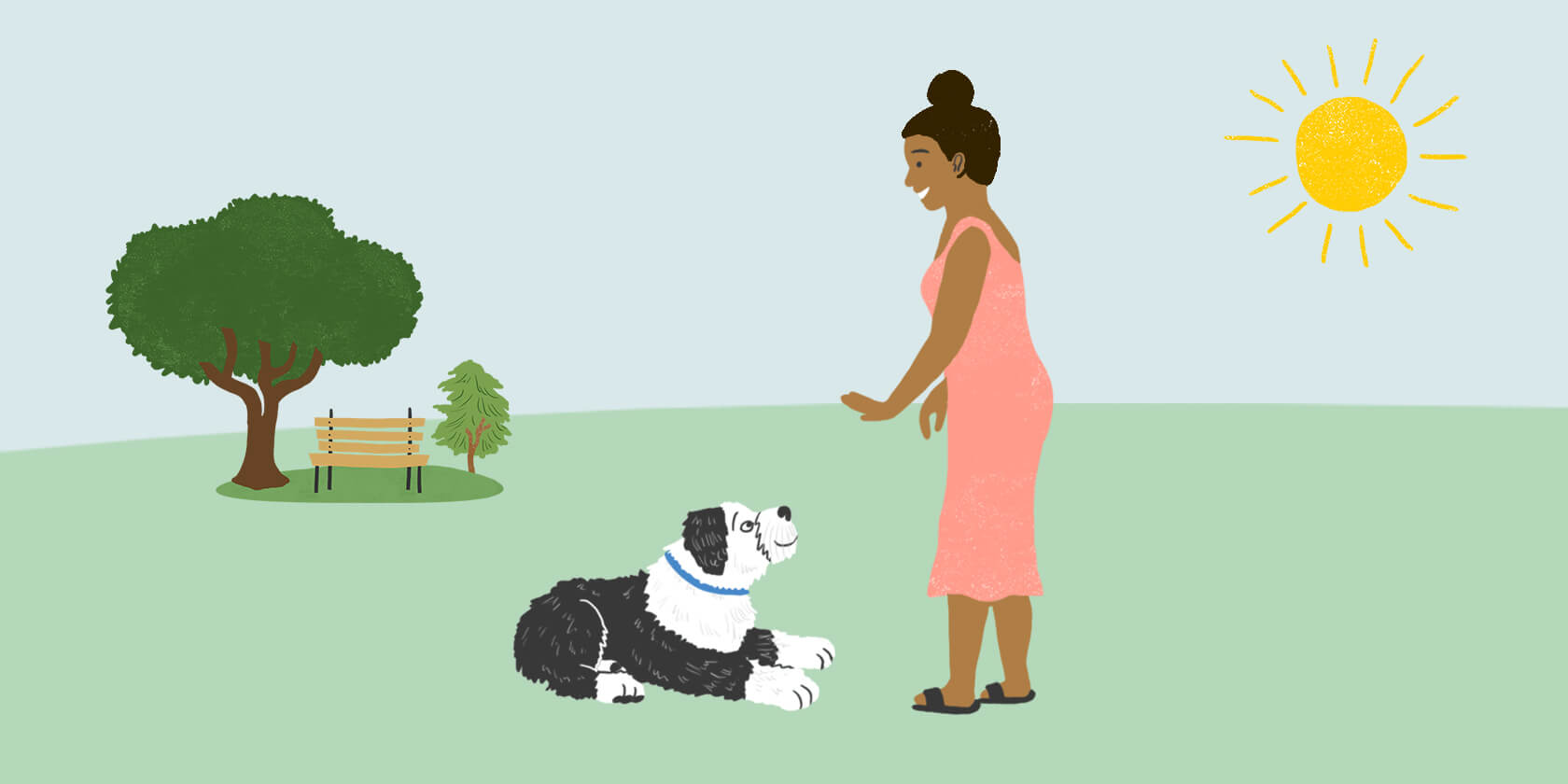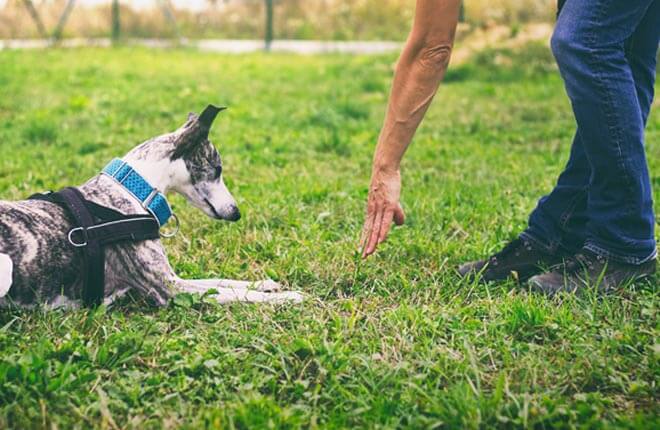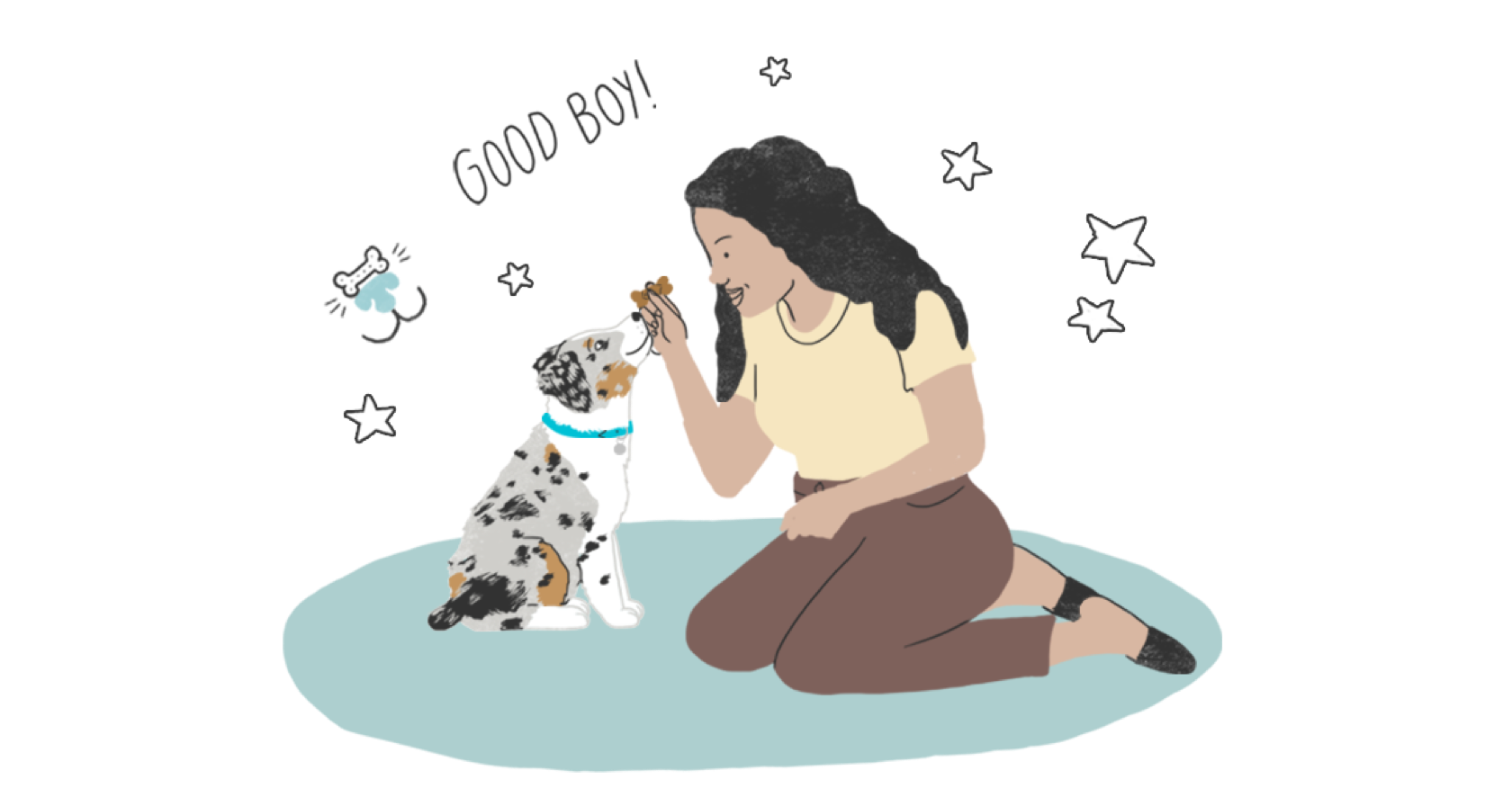“Lie down” is a simple cue, but it can have a big impact. Not only can it be a gateway to teach more complex actions like roll over, but it can also cue your dog to settle and relax in hectic situations and stop them where they’re in an emergency. The good news is that it’s a very simple cue to teach — it’s just a matter of encouraging one of your dog’s natural behaviors using positive reinforcement.
Know What You Want to Teach
Some pre-planning is needed before starting to train in order to avoid confusing your dog or stumbling when the moment comes to reinforce the behavior you want.
Choose your cue word before you get started. Consistency is everything, and anyone working with your dog will need to use this same cue. It should be simple and something you don’t use in other ways with your dog. For example, if you use “down” to get them off the couch, you can’t use “down” for lying down. Your dog won’t understand what you want. Remember, “off” is different than “down.”

Gather Your Supplies
For this type of training, you really only need three things:
- Treats. Because you may end up giving several treats throughout your training sessions, try one that’s low in calories and make sure to account for any extra treat calories in your dog’s daily food needs.
- A treat pouch. You can use a designated treat pouch, your pocket, or another container. As long as your treats are easily accessible and can move with you, you’re all set.
- A marker. Your marker is the way you tell your dog what exactly they got right and helps your training be precise and clear for them. A clicker is a common marker used in dog training. If you don’t want to use a clicker, just use the word “yes” instead (it works the same way). You’ll click or say “yes” at the exact moment your dog lies down. Then you’ll give the treat. Done with the correct timing, your dog soon understands lie down = click (or yes) = treat.
Teaching Lie Down Using a Lure
- Start with your dog in a sit position.
- Holding a treat in a closed hand, let your dog smell the treat to recognize you have it.
- Slowly move your hand from your dog’s nose to the ground. Your dog will likely follow your hand down with their head. This is called “luring” your dog.
- Then pull your treat hand along the ground, away from your dog’s nose. Think of it as drawing a large L from their nose to the ground and then along the ground away from them. This will prompt them to follow, moving their body closer to the ground and bending their elbows.
- As soon as their elbows touch the floor, click or say “yes” then give them the treat in this position.
- Repeat this process until your dog is readily and quickly following the lure all the way down. This is when you can start adding in the verbal cue.
- Say “down” (or whatever verbal cue you’ve chosen) and then lure your dog into position. Immediately mark with a click or “yes” and treat.
- After a few sessions, start making your lure smaller and smaller. As long as your dog continues to connect the cue and the action, you can continue tapering off your use of the lure.
- When your dog lies down on cue, with no lure, you’ve done it! Keep practicing the cue-action-marker-treat sequence to reinforce the behavior. If your dog isn’t quite there yet, just keep working on it. Try smaller hand motions to more gradually taper off until your dog responds to just the verbal cue.
- Over time, you can start removing treats from the process. This should be done gradually as you did with the lure. You can even replace rewarding with treats to rewarding with praise and play.
To lure your dog into a down position from standing, you’ll want to change the angle of your lure. While your dog is standing, place the luring hand in front of their nose and slowly move your hand down from their nose and slightly inward to the ground between their front paws. This movement helps them fold back into the down rather than sitting first. Mark with a click or “yes” when their rear hits the floor.
Teaching Lie Down Using the Capturing Method
Some dogs get too excited with a lure, are shy, don’t want to follow a lure, or their body type makes it difficult to lure them comfortably into a down position (such as deep-chested breeds like Greyhounds). The timing of your marker is key, but both remove the necessity for a food lure from the get-go.
- Have your treats and clicker on you at all times.
- Whenever your dog naturally lies down, mark with a click or “yes” and give them a treat in that position.
- If you notice your dog is about to lie down, go ahead and add the verbal cue as they move into position. Mark when they finish lying down and treat.
- After you’ve “captured” at least twenty downs with the verbal cue, see if your dog has made the connection between the cue and the action. Ask for a “down.” If they move into the down position, mark and have a treat party! If they don’t, they just need more practice to associate the verbal cue and the action.
ZPC-01310



